Common Signs of Institutional Negligence in Juvenile Detention
Juvenile detention facilities are supposed to help young people get back on track by providing education, therapy, and support. But when these institutions fail, they can do more harm than good, leaving vulnerable youth at risk of abuse and neglect. When institutions knowingly allow, permit, or encourage negligent practices, young people, many of whom have already endured trauma, become vulnerable to neglect, abuse, and systemic failures that can have lasting consequences.
At Crew Janci LLP, we represent survivors of institutional abuse in juvenile detention facilities, including Oregon Youth Authority (OYA) institutions. Through these and similar cases, we have seen firsthand how systemic negligence enables harm, and we are committed to revealing these failures and seeking justice for those affected. Our legal experience has helped uncover the patterns of misconduct and negligence that frequently put vulnerable youth at risk.
If you or someone you care about has experienced mistreatment or abuse in a juvenile detention facility, you don’t have to face it alone. Recognizing the warning signs of institutional negligence is crucial, and taking action can help increase the likelihood that others are protected from similar harm. Support and justice are within reach.
Here are five common signs of institutional negligence to be aware of and real world examples of each.
1. Failure to Supervise Staff and Youth
A lack of proper oversight and supervision is one of the most glaring signs of institutional negligence in juvenile facilities. Misconduct, including physical abuse, sexual abuse, and neglect, can thrive without sufficient monitoring
Common Red Flags:
- Understaffing & Lack of Proper Ratios: When there are too few employees to supervise youth, incidents of violence, bullying, and exploitation increase. Staffing shortages also make it more difficult to provide proper medical care, educational programming, and rehabilitative services.
- Inadequate Staff Training: Staff members should be trained in trauma-informed care, de-escalation techniques, and abuse prevention. Without this training, they may resort to harsh punishments, improper restraint methods, or emotional mistreatment.
- Unsupervised One-on-One Interactions: Facilities that allow private, unsupervised interactions between staff and youth create opportunities for abuse. In multiple documented cases, staff members have taken advantage of this lack of oversight to groom and exploit minors.
- Lack of Camera Surveillance or Monitoring: Many juvenile facilities fail to install or properly maintain security cameras, making it easier for misconduct to occur without consequence. Even when cameras exist, institutions sometimes fail to review footage or act on complaints.
Real-World Example: At MacLaren Youth Correctional Facility, a substance counselor groomed and sexually abused multiple youth, while other staff members turned a blind eye or even retaliated against survivors for reporting the abuse.
2. Inconsistent or Inadequate Abuse Reporting Systems
Every juvenile detention facility should have clear, accessible, and trustworthy reporting mechanisms in place for abuse and mistreatment. Unfortunately, many facilities fail to properly address complaints, allowing abusers to remain in positions of power.
Common Red Flags:
- Lack of Transparency & Family Communication: Parents and guardians should have the right to check on the well-being of their children in custody. Facilities that make it difficult for families to visit, call, or get information about their child’s welfare raise major concerns.
- Failure to Take Complaints Seriously: When youth report physical, sexual, or emotional abuse, their allegations should be thoroughly investigated. In many facilities, staff dismiss complaints, cover up allegations, or intimidate youth into silence.
- Retaliation Against Whistleblowers: Staff members or youth who report misconduct should be protected from retaliation. However, some facilities punish those who speak out, creating a culture of silence and fear.
Real-World Example: At Oak Creek Youth Correctional Facility, multiple staff members were found to have engaged in inappropriate relationships with incarcerated youth. Despite reports being filed, the incidents were underreported, mishandled, or ignored.
3. High Incidence of Physical, Sexual, and Psychological Abuse
A disturbing trend in negligent juvenile facilities is the recurring abuse of youth by both staff and peers. Whether through staff misconduct, peer-on-peer violence, or a culture of indifference, these facilities fail to protect the children in their care.
Common Red Flags:
- Frequent Allegations of Sexual Misconduct: If a facility has a history of sexual abuse allegations, especially involving staff members, this is a strong indication of systemic negligence.
- Excessive Use of Force & Improper Restraints: Some facilities rely on physical violence and improper restraint techniques rather than de-escalation strategies. Youth in these facilities often experience harsh physical interventions, dangerous restraint methods, and extended periods of isolation.
- Lack of Protective Measures: Facilities should implement strong anti-bullying and anti-assault protocols. If youth are constantly fighting, self-harming, or showing signs of severe distress, it suggests that staff are failing to maintain safety.
Real-World Example: A 2012 federal report found that 11.6% of youth at Hillcrest Youth Correctional Facility had experienced sexual victimization, a rate significantly higher than the national average.
4. Neglect of Medical and Mental Health Needs
Juvenile facilities house many youth with pre-existing trauma, mental health disorders, and substance abuse issues. Institutions that knowingly allow, permit, or encourage inadequate medical and psychological care place these youth at even greater risk.
Common Red Flags:
- Failure to Provide Basic Medical Treatment: Some facilities deny necessary medications, delay urgent care, or ignore serious health concerns.
- Lack of Mental Health Counseling & Trauma Support: Many youth in custody have histories of abuse, PTSD, depression, or addiction. If mental health programs are nonexistent or understaffed, youth can spiral into self-harm, suicidal ideation, or violent outbursts.
- Use of Isolation as Punishment: Some facilities abuse solitary confinement, forcing youth to spend long hours—or even days—alone in a small cell with no social interaction. This severely impacts mental health and can lead to anxiety, paranoia, and suicidal thoughts.
Real-World Example: Oregon Youth Authority’s failure to provide adequate mental health services has contributed to high rates of self-harm, trauma, and psychiatric distress among incarcerated youth.
5. Recurring Staff Misconduct and Lack of Accountability
Negligent institutions often fail to hold abusive staff accountable, which means that offenders can continue harming youth without consequence. This failure not only deepens the trauma of survivors but also signals to other staff that misconduct will be tolerated, creating a dangerous cycle of abuse and negligence.
Common Red Flags:
- Hiring Individuals with Histories of Misconduct: Some facilities fail to conduct background checks, allowing repeat offenders to work with vulnerable youth.
- Minimal Consequences for Abusive Employees: When staff accused of sexual misconduct, excessive force, or negligence are merely transferred or given light punishments, the institution enables continued abuse.
- Institutional Cover-Ups: Some facilities actively suppress allegations to protect their reputation rather than ensuring justice for survivors.
Real-World Example: At MacLaren Youth Correctional Facility, a known sex offender was allowed to work with children, leading to further abuse.
Seeking Justice for Survivors
Survivors of institutional abuse deserve justice. If you or a loved one has suffered mistreatment in a juvenile detention facility, legal action can increase the likelihood of accountability and change. Contact us today.
9755 SW Barnes Road, Suite 430, Portland, Oregon 97225
(888) 407-0224
info@crewjanci.com
For any questions, Submit Our Confidential Form.
Empowering Change
Related Resources
are here to guide and empower you or someone you care about.
Don’t face this alone.































